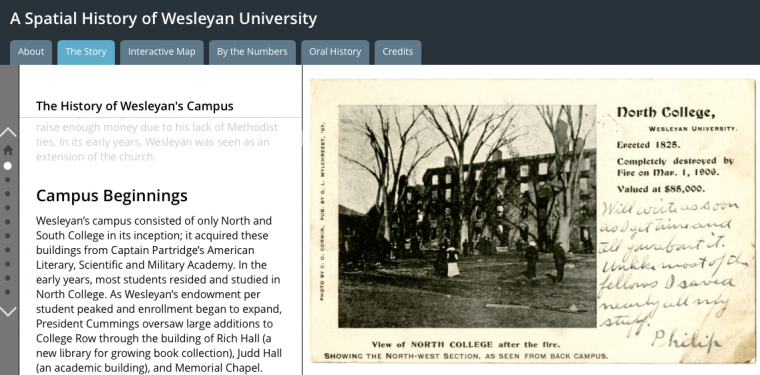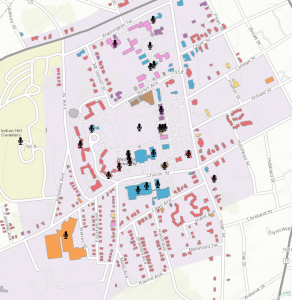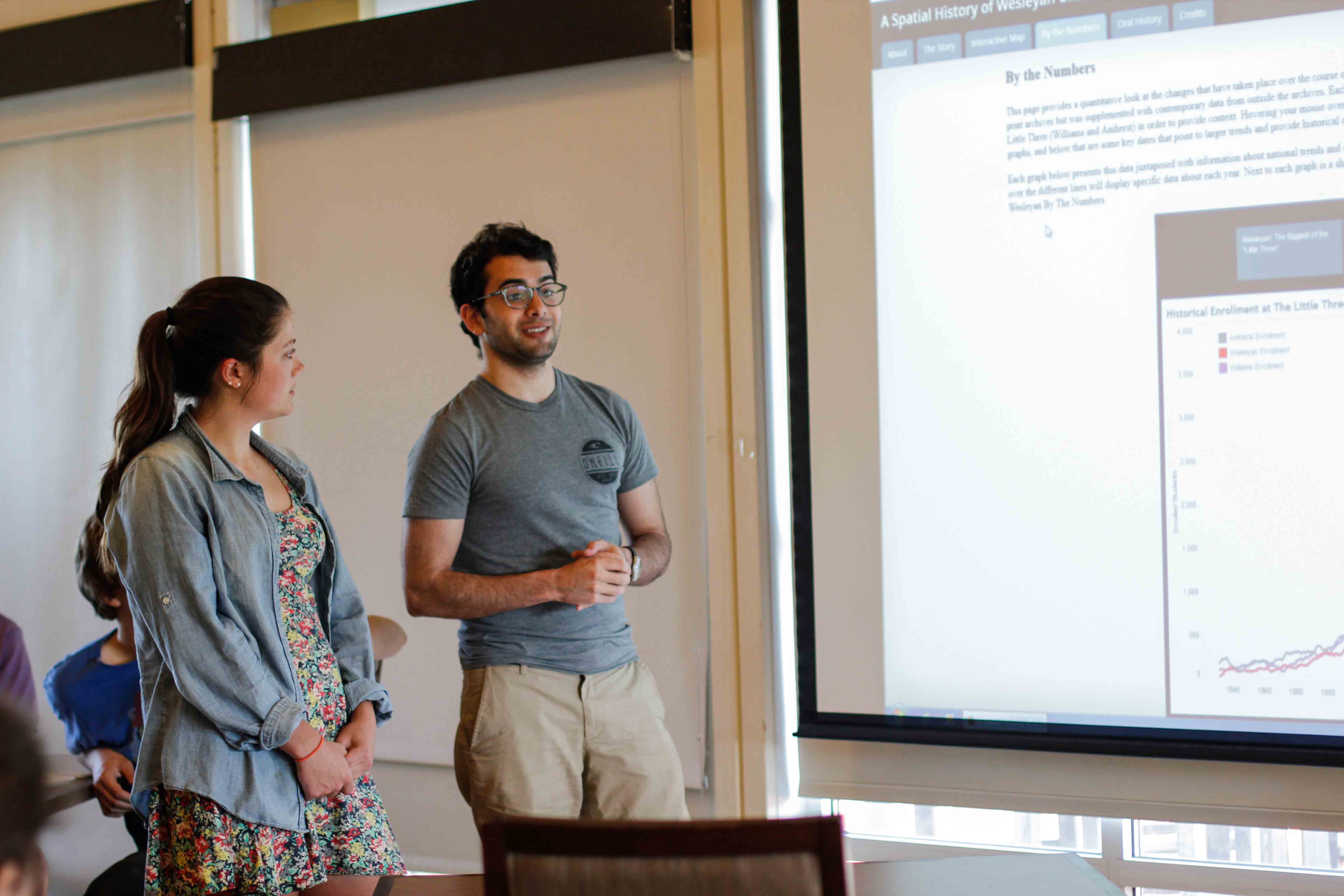Digital History Class Creates “A Spatial History of Wesleyan University”


This semester, 18 students with an interest in communication and the history of Wesleyan University created a new website, “A Spatial History of Wesleyan University.”
The students, who were enrolled in the spring 2015 course, Digital History, conceived, designed, built, publicized, and launched this site. The class was taught by Amrys O. Williams, a visiting assistant professor of history, and was part of the university’s Digital and Computational Knowledge Initiative.
A Spatial History of Wesleyan University combines geographical and quantitative analysis with archival and oral history research to interpret the past in place. By studying the history of Wesleyan’s campus landscape and buildings alongside the university’s enrollment, tuition, and student body, website visitors can see the connections between the cultural life of the university and its physical environment.

The site has four main sections:
- A historical narrative offers an overview of the major periods and episodes in the campus’s history, tracing student life, housing, and athletics, as well as the university’s changing educational mission and its relationship to other liberal arts schools in the area.
- An interactive map allows readers to select and view different historical maps and aerial photographs of campus, learn more about individual buildings and see how the campus expanded over time.
- A “By the Numbers” series of graphs trace data about enrollment, tuition and endowment over time, offering insights into the financial and demographic shifts that affected the shape and experience of campus.
- Oral history video clips enrich these chronological, spatial, and quantitative stories with the voices of members of the Wesleyan community and their lived experiences of campus.
“The website gives a multifaceted overview of the history while also allowing visitors the freedom to explore the site and the campus on their own. It’s pretty darn cool,” Williams said.
Digital history is a part of the emerging field of the digital humanities, or DH. People define DH in many ways, but Williams tends to think about it in a broad sense: the use of digital and computational techniques (with STEM fields) to further humanities research, scholarship, and communication.
“In my mind, this could be anything from making a digital video or website that explores a historical topic to writing a computer program that analyzes literary texts,” Williams said. “What’s most exciting to me about DH is the way it relies upon collaboration across disciplines: bringing together people with different skill sets, interests, and ideas to make things that work, that do something useful.”

The class spent the first several weeks of the course talking about what they wanted to build, using their common interests, range of abilities, and learning desires to guide them. Students brainstormed in a shared document and looked at examples of other digital-historical projects, brought in specialists from around campus to introduce them to different techniques, and eventually pitched their ideas to the class.
“The first hurdle was simply deciding what we wanted to make. Once we had done that, we had to develop good working practices. Communication was a big challenge—making sure each team knew what the other teams were up to, and figuring out what we needed to devote in-class time to versus what teams could take care of on their own outside of class,” Williams said. “It took a while to hit our stride, but we figured it out. We had a lot of help from so many people across campus.”

Williams’ approach to the class was inspired by her experience at One Week | One Tool, an advanced summer institute in the digital humanities sponsored by the National Endowment for the Humanities at the Roy Rosenzweig Center for History and New Media at George Mason University, which she took part in during the summer of 2013. Over the course of seven days, she and 11 others conceived, designed and built a web-based tool for helping researchers find new sources and materials that they might not locate through traditional keyword searching.
Learn more about the individual students who created the site in the website’s Credits section. Gary Shaw, professor of history, professor of Medieval studies, associate editor of History and Theory, will teach the Digital History course next year.


